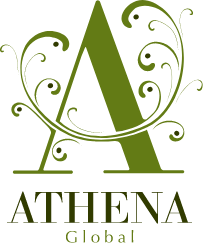Case Study: Linking Gender Impact to Financial Incentives in a Fund Structure
Impact Linked Carry for Gender Outcomes
Aligning incentives between financial and impact performance among the key stakeholders in an investment fund structure has progressed substantially in the last decade with what is commonly referred to as “impact linked carry (ILC).” ILC is the mechanism through which the financial performance is “linked” to the impact performance, enabling stakeholders to value and monetize impact within the structure. In a typical Fund structure, the General Partner (GP, or Investment Manager) and the Investors (LP of Limited Partners) create a legal entity that is the “Fund” with established roles, responsibilities, and goals, as illustrated in Figure 1. The fund makes direct investments into companies called Portfolio companies.
Historically, traditional Funds tied carried interest to achieving financial goals. With the advent of Impact Funds over the last two decades, the challenge of aligning impact and financial incentives between all three key stakeholders–GP, LP, and Portfolio Companies—has evolved far beyond metrics into methodologies to more accurately ensure that all parties have a vested interest in and responsibility for ensuring impact goals are met as well as financial goals. The financial incentives resulting from reaching impact goals can benefit the GP, the LPs, and even the portfolio companies. This structure provides long-term incentives to ensure that impact objectives are aligned with investment decisions.

Project Overview
Athena Global provided advisory support to a Southeast Asian Gender-Leading, early-stage, tech-focused Impact Fund focused on women’s economic empowerment to develop and implement an impact-linked carry model. In a typical Fund structure, carried interest (“carry”) is paid to fund managers as a percentage of the returns generated by the fund (the LPs get the largest portion, and the GP also receives a portion to align incentives for successful investments). This project integrated the gender impact of the Portfolio into its carry in the form of an additional percentage, of the carry, as an incentive to maximize the fund’s gender-related social impact objectives.
In this case, our client, the GP, wanted to create an ILC model that effectively acts as a “money back guarantee” for the LPs, in that if gender-related impact targets were not met, the LPs would get a cash bonus. For this GP, they felt they needed to provide this type of incentive to attract (gender) impact-oriented investors (LPs) focused on positive gender outcomes. They were willing to forego additional income to illustrate that investing in positive gender outcomes is a viable and attainable investment thesis.
The overall outcome was a practical and quantifiable framework for the GP to track and align incentives for gender impact throughout the life of the fund across portfolio companies in a wide variety of industries, all working to bring about women’s empowerment through technology. Metrics were developed collaboratively and iteratively with the GP team for them to be able to monitor and quantify the impact outcomes on an annual basis, as well as the close of the fund. In addition to tracking progress against Fund impact goals, the ability to quantify and monetize positive gender outcomes is also a valuable fundraising tool for the GP to raise additional capital in this or subsequent Funds.

The Challenge
As an investor in scalable solutions with an outsized impact on women, the GP wanted to incorporate gender-impact-linked carry to track and align the impact of their women-led ventures in their Portfolio. This gender-leading GP wanted to build the evidence base for “de-risking” gender by showing that gender-equitable businesses provide sufficient financial returns worthy of commercial investment beyond grant funding.
The GP engaged Athena Global to develop a practical framework and metrics to proactively manage and monitor the Portfolio based on measurable targets, valuing gender impact rather than simply counting women and girls as “beneficiaries.” They also felt so strongly about this aspect of their Investment Thesis and Theory of Change that they were willing to provide additional compensation to the LPs rather than keeping it to themselves.
This GP’s primary investment screen is gender equitable technology-focused businesses; subsequently, they invest in a variety of industries, sectors, and types of companies, which made developing consistent metrics a challenge to sufficiently capture the gender impact outcomes of each portfolio company, not just the outputs. In order to do this, Athena Global used the 2X framework to create “4 corners” of gender equity: women as founders, leaders, employees, and consumers/users. This GP also wanted to track progress against goals throughout the fund’s life, not just at exit, so we were able to use the 2X framework to create goals in each of the four areas, which was also helpful in assessing the overall Portfolio Composition.
Athena’s Approach
Approaches to impact-linked carry vary considerably depending on the GP’s priorities for financial and impact objectives and their measurement and implementation capabilities. The gender-impact-linked carry developed for the GP combined features from different models to create tailor-made characteristics that suited the fund’s current and envisioned impact investment thesis. Key considerations included:
- percent of the carry pool linked to impact
- frequency and methodology for impact measurement
- minimum and maximum thresholds for impact carry
- reward (punishment) of out-performance (non-achievement)
- how data is audited and captured
The GP for this Impact Fund invests in gender-equitable businesses that provide disruptive solutions to improve livelihoods for women, which yields two expected impacts from companies in their Portfolio: the number of lives affected (breadth) and the change in the quality of life (depth). Given that the fund has a diverse portfolio of industries and, therefore, types of impact on women, Athena selected metrics following a common women-centric approach that allows for comparability and scalability. Subsequently, the ILC model that Athena Global developed also included a “money back guarantee” by which total or partial proceeds of any gains as a result of ILC will be returned to LPs at the end of the fund life, signaling to LPs that the impact focus is intentional and a priority for the fund.

Looking Ahead…
ILC is emerging as a useful tool in developing commercially viable solutions to invest in impact. The ILC can help to align incentives and overcome misperceptions in a Fund structure to sufficiently value the impact outcomes in a way that makes them comparable and equal to pure financial return goals.
As both an advisory firm and impact finance company, Athena Global was able to leverage industry best practices as well as personal experience to develop a viable solution for this GP and their LPs. We also took into consideration the Portfolio Companies, which are often overlooked when aligning incentives, even though the Portfolio Companies are the only stakeholder responsible for meeting the impact goals. The impact metrics we co-developed with the GP were largely embedded in the Monitoring & Evaluation framework, and individual growth goals of the Portfolio Companies, in a way that was not burdensome or misaligned with any key stakeholder.
Athena Global is pleased to be at the forefront of developing innovative and practical solutions for impact investing. No doubt, the industry has evolved substantially in the last two decades. And we look forward to continuing to be leaders in developing viable impact investing investment structures and instruments.
Two questions that are top of mind for us right now include:
- In a traditional Fund model, investing in a “Unicorn” – a business whose exceptional growth and sale provide sufficient financial profit to the GP and LP to overcome (and supersede) any other losses—is often the ultimate goal. But what about in an impact-oriented fund? Should the model allow an Impact Unicorn to drive the Impact Linked Carry?
- As some of the early Impact Funds make exits, what are the tools and metrics to align incentives to ensure that the impact achieved under the fund’s life continues beyond sale? If a woman-owned company is sold to a male owner, can it still be considered a “gender lens”? If a female founding team is diluted through investment into a minority position, is it still considered “women-owned”?
Contact Athena Advisory
